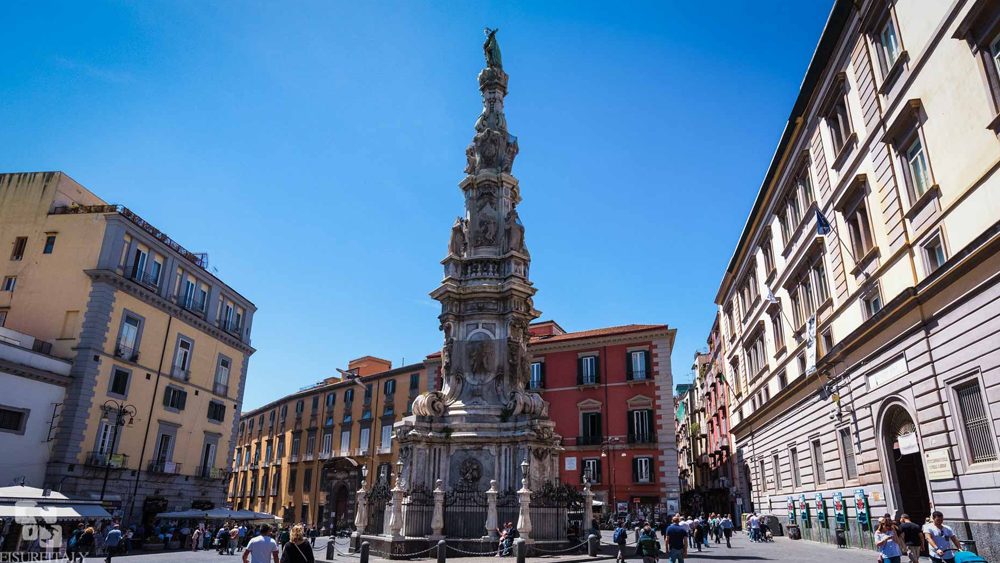About Naples
Located in the gulf of the same name, Naples, with its 957,811 inhabitants, is the third largest Italian city by population. The city, capital of the Campania region, is famous all over the world for its artistic and naturalistic beauties, for its historical past and for the liveliness of its inhabitants. Naples has, in fact, a rich artistic and architectural heritage, declared in 1995, together with the entire historic center (the largest in Europe), a UNESCO World Heritage Site, as well as wonderful views, which overlook the Vesuvius and the islands of Capri, Ischia and Procida. This magic even has its origin in myth: according to ancient Greek and Roman historians, the birth of the village is to be connected to the legend of the marine semi-goddess Parthenope, who let herself die for not being able, with singing, to bewitch Ulysses .

The History
Naples boasts a very long history, which originates in the 9th century BC. with the foundation of the town of Partenope, at the point where today Castel dell’Ovo stands. In the 6th century BC however, the area was abandoned, thus taking the name of “Palepolis” (old city), to found “Neapolis” (new city) nearby. Considered one of the main centers of Magna Greece, the city, over the centuries, saw the succession of long and numerous foreign dominations, holding an important position in Italy and in Europe. Under the dominion of the Roman Empire, the city, appreciated for the beauty of its coasts and luxurious spas, experienced a period of economic and cultural prosperity. Subsequently, with the fall of the Roman Empire, Naples first became an autonomous duchy of Byzantium (763 AD), assuming a role of fundamental importance for the conservation of the Byzantine dominions in Italy; then Norman dominion, which led to its annexation to the Kingdom of Sicily; and Swabian conquest with the accession to the throne of Emperor Frederick II, during which there was a very flourishing period from a cultural point of view. But it was when the Angevin dynasty took power that the city developed from an urban, demographic and economic point of view; while with the Aragones the metropolis experienced one of its periods of maximum splendor in the artistic and cultural field. In the following centuries it experienced the Spanish domination, against which the people tried, in vain, to rebel (1647), and a short period of Austrian domination (1707-1734), until it became an autonomous kingdom, thanks to Charles of Bourbon. In 1806, Napoleon assigned the throne of the kingdom to his brother Giuseppe Bonaparte, starting the short French period (until 1815). The restoration of the Bourbons, who had ascended the throne of the Kingdom of the Two Sicilies, was, however, made in vain by Garibaldi, who entered the city in 1860. Through a popular plebiscite, the city was annexed to the Kingdom of Piedmont, transformed in 1870 into the Kingdom of Italy. Even during the Second World War the city played an important role with the Four Days of Naples, during which the people revolted against the Germans.

Visiting Naples
Naples is not just history, it is much more: it is culture, art, tradition, music and literature. The best way to get to know this magical city is to live it without limits, travel inside it, let yourself be transported in the alleys, smell its scents, listen to its sounds, savor its flavors, be surprised by the treasures it contains. Those who come to Naples cannot leave without first having entered the Cathedral, where the miracle of San Gennaro has been renewed for centuries, without having first visited the Capodimonte museum and the Royal Palace, or without having at least once boarded the ferry that leads to the turn of the islands. Visiting Naples is all this: eating a pizza in one of the many restaurants in the historic center, strolling along the seafront humming a Neapolitan song, appreciating the sympathy and genius of the Neapolitans. Naples is a city that knows no time, and everything we see of it is only a modest part of its entirety, because below the buildings, churches and streets lies another city, the underground one.
Naples: the more you know it, the more you fall in love.



